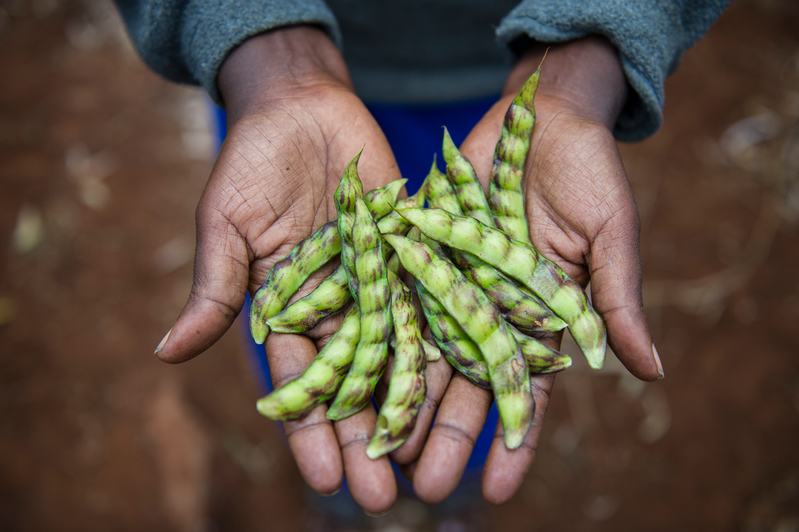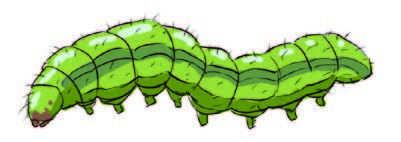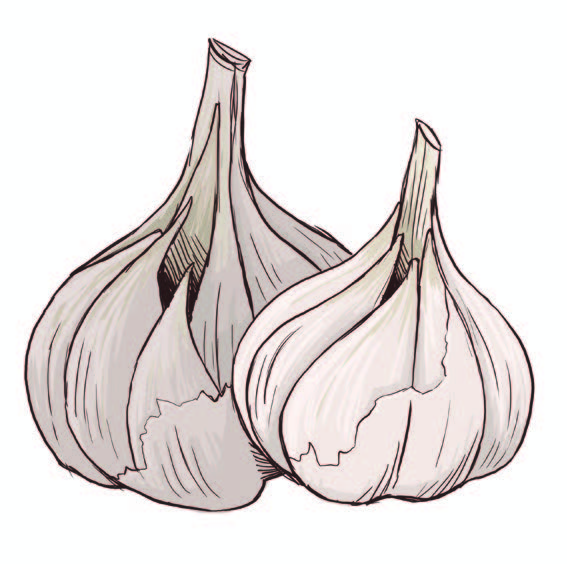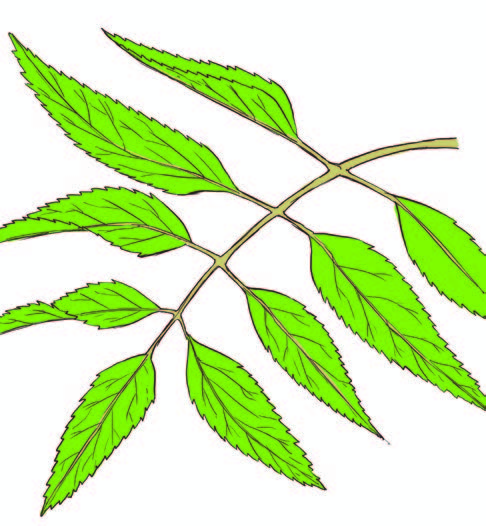Learning objectives of this guide
- To differentiate between harmful pests and beneficial organisms on the farm.
- To understand the common pests and diseases in Kenya.
- To understand the different ways of controlling pests and diseases naturally.
- To explain the process of monitoring pest, and diseases
Learning Outcomes
This how to guide on pests, diseases and weed management will enable you to
- Understand the kind of pest that cause damage to the crops
- Understand the kind of diseases that cause damage to the crops
- Understand the various environmentally friendly ways to manage pests, weeds and diseases
- Understand the process of monitoring pest and diseases.

Every Farm has Harmful and Beneficial Organisms
Some of these organisms are beneficial to the soil such as the earthworm and harmful to the plants such as aphids.
A. Beneficial organisms
These include the productive bugs that feed on harmful pests while at the same time helping in the relevant processes of crop growth for instance bees which help in the pollination process.
Ways of Attracting Beneficial Organisms
For these organisms to survive and thrive they need a supportive environment that can be brought about by the following practices:
- Avoiding the use of chemical based pesticides towards pest control because it end up killing all the organisms in the farm
- Planting of pollen and nectar producing plants in the farm to attract bees
- Planting perennials or permanent plants around your farm to attract praying mantis.
B. Harmful Pests
Types of Pests and Diseases
Trans-boundary Pests and Diseases
These can easily spread to several countries and reach epidemic proportions, causing huge losses to crop; outbreaks and upsurges which eventually threatens livelihoods of vulnerable farmers and the food and nutrition security of millions at the same time.
How do transboundary pests spread?
- Trade or other human-migrated movement
- Environmental forces like weather and windborne
- Insects among other vector-borne pathogens
Click here to learn more on transboundary pests and diseases.(external link)
Storage Pests
These range from rodents, beetles, moths and fungi. They are further categorized into primary and secondary pests.
Primary Pests:
these have the ability to feed on whole and healthy grains. They include grain borers, weevils and Angoumois grain moths.
Secondary Pests:
these are only limited to broken, moist and soft grains; which are the remnant of the grain damaged by primary pests. They include; flour beetles.
Common pests and diseases in Kenya
African Armyworm
This is a migratory moth whose larvae (caterpillars) are crucial pests of pasture and cereal crops. Outbreaks follow the onset of wet seasons which come with new growth on dry grassland and planting of cereal crops.
Host plants:
barley, pearl millet, African millet, maize, oat, rice, sorghum, sugarcane, teff, wheat, and pasture grasses.
Read more on the African armyworm

How To Control The African Armyworm Using Neem
Neem seeds and leaf extracts are used to kill armyworms although in practicable small holdings.
Learn how to prepare the neem solution to control the fall army worm
1. African Bollworm
This damage a wide variety of food, fiber, oilseed, fodder and horticultural crops. It is characterized with an ability to feed on many plant species.
Host plants: French beans, dry beans, peas, legumes, maize, sorghum, sunflower, tobacco and tomato.
Click here to read more on the African Bollworm
2. Leaf Mining Flies
These pose a serious threat to vegetables and ornamental plants. They are grouped into, serpentine leaf miner, vegetable leaf miner, cabbage leaf miner and the pea leaf miner.
Host plants: Amaranth, Beans, Cabbage/Kale, Brassicas, Okra, Onion, Passion fruit, Peas, Peppers, Tomato
Click here to read more on leaf mining flies
3. Aphids
These pests are known to cause damage all across the African continent. The major species include banana aphid, black bean aphid, cabbage aphid, false cabbage aphid, citrus aphid, green peach aphid, cotton aphid, mango aphid, pea aphid, sorghum aphid and the maize aphid among many more.
Host plants: African Nightshade, Amaranth, Bananas, Beans, Cabbage/Kale, Brassicas, Citrus plants, Cocoa, Cotton, Cowpea, Cucumber, Eggplant, Green gram, Groundnut, Maize, Mango, Okra, Papaya, Passion fruit, Peas, Peppers, Pigeon pea, Potato, Pumpkin, Sesame, Soybean, Sorghum, Spider plant, Spinach, Sweet potato, Tea, Tomato, Watermelon, Wheat, Zucchini/ Courgette
Click here to read more on Aphids
4. Athracnose
It is a disease of the foliage, stems, or fruits that typically appear as dark-coloured spots or sunken lesions with a slightly raised rim. Some cause twig or branch dieback.
Host Plants: Avocados, Bananas, Beans, Cashew, Cassava, Citrus, plants, Cotton, Cowpea, Cucumber, Eggplant, Green gram, Mango, Onion, Peas, Peppers, Pumpkin, Sorghum, Soybean, Spinach, Sugarcane, Tomato, Watermelon, Wheat, Yam, Zucchini/ Courgette
Click here to read more on anthracnose
Monitoring of pests and diseases
It is essential for farmers to monitor pests and diseases on their farms to minimise the impacts of these pests by arresting them early.
This can be done through:
- Regular scouting of the crops in the early morning and late evenings when the pests are perceived to be feeding.
- Farmers should look out for eggs and small caterpillars for the sake of early detection.
Want to know more common pests and diseases in Kenya?
For more information on pests and diseases in Kenya click here (External Link)
THE NATURAL APPROACH TO PEST AND DISEASE CONTROL
1. Hot water treatment
It involves the use of hot water to treat certain pests and diseases
This is mainly used against the following diseases, bacterial blight, bacterial spot, black scurf, common blight and black leg. It is also used to control the following pests Fruit flies(on mango fruits) / Banana weevil/ Mealybugs (cassava and pineapple) / Nematodes (banana suckers and pineapples)
Click here for procedures on using hot water treatment to control pests
2 Plant Extracts
These involves the use of various plant extracts such as Neem, Garlic and Pyrethrum obtained directly from their respective plants to control pests and diseases.
a. Garlic extract:
Garlic has an antifeedant, bacterial, fungicidal, insecticidal nematocidal and repellent properties. It can be used on the following pests and diseases; African bollworm, downy mildew, fruit rots, rusts, blights, African armyworm, onion thrips, root knot nematodes, anthracnose, rice bugs. Garlic has a non-selective broad-spectrum effect that can kill beneficial organisms too, one has to be extremely cautious when using it in pest control. For instance, it is not advisable for use in Aphid control since it kills the natural enemies of aphids.
Click here for more information on the standard procedures for its preparation
b. Neem extract
Neem extract doubles up as an insecticide, fungicide, nematicide, acaricide and as a molluscicide. It can be used against the following pests: African armyworm, African bollworm, Aphids, Banana weevil, Cabbage looper, Cabbage moth, Cabbage webworm, Coconut mite, Cutworms, Diamondback moth, Giant looper
Unlike garlic extract, the neem does not harm the beneficial organisms, hence highly recommended for effective pest control.
Click here for the standard procedure on the preparation of the various concentrates of neem extract
1. Bio fumigation
This method makes use of fresh plant mass and manure which is introduced into the soil to release chemical substances which are able to combat soil borne pests and diseases and produce a heating effect that enhances biological activities in the soil. This method of pest control can be used against Root-knot nematodes and bacterial wilt.
The beneficial plants that provide the right concentrate include; cabbage, cauliflower and radish.
Click here to learn more on how to carry out bio-fumigation
2. Use of Natural Enemies
Various beneficial organisms can help the farmer to keep pests and diseases, hence minimizing the economic damage. predator organisms are known to keep the population of their prey in check. The predators and parasitoids are some of the groups of the beneficial organisms. farmers are advised to keep the balance in their favour by observing the populations of beneficial organisms like ladybirds, spiders and hoverfly larvae which feed on plant eating pests like aphids and caterpillars.
Click here for more on the beneficial organisms
Click here to learning more about natural pest control methods
3. Cultural Methods of Pest Control
This approach recognizes pests not as enemies but as indicators of problems in the design and management of systems. Potential pests are hence prevented from becoming problems by means of the integration of cultural and biological controls.
It makes the environment less attractive to pests and less favorable for their survival, dispersal, growth and reproduction. It requires accurate knowledge of crop and pest biology.
4. Crop rotation
Each kind of plant attracts its own particular pests and diseases, and therefore crop rotation allows for the break on particular persistent pests with a change of crop. It is therefore important for farmers to evaluate the possible rotations in the agroecological zone to maximize on the yields and pest control. This practice help reduces pest risks associated with monoculture through interrupting the pest attack chain between subsequent crops.
Click here for key information on crop rotation
5. Intercropping and Push pull
It is a multiple cropping practice involving growing two or more crops in proximity. Intercropping of compatible plants also encourages biodiversity, by providing a habitat for a variety of beneficial insects and soil organisms that would not be present in a single crop environment. This biodiversity can in turn help to limit outbreaks of crop pests by increasing the diversity or abundance of natural enemies, such as spiders or parasitic wasps.
· Push-Pull is a simple cropping strategy, whereby farmers use Napier grass or Bracharia grass and desmodium legume (silverleaf or greenleaf desmodium) as intercrops in maize.
Desmodium is planted in between the rows of maize. It produces a smell or odour that stem borer moths do not like. The smell ‘pushes’ away the stem borer moths from the maize crop. On the other hand, Napier grass (Pennisetum purpureum)/ Bracharia grass (Brachiaria cv Mulato ) is planted around the maize crop as a trap plant.
Click here for more information on intercropping and Push-pull

WEED MANAGEMENT
A weed is a plant that grows where it is not wanted. Weeds are known to reduce yields by competing with the plants for sunlight, moisture and soil nutrients hence need to control them through ecological practices:
Weed management should focus on the control of weed species to avoid both competition on crops and preventing further build of weed seed bank in the soil to eventually reduce it.
Control mechanisms include,
- Digging and pulling the weeds
- Shallow cultivation
- Slashing of the weeds
- Planting of ground cover crops like legumes to crow out the weeds
- Burning of the weeds
Click here to learn more on the harmful and beneficial weeds
References
· Nazir, Talha & Khan, Sehroon & Qiu, Dewen. (2019). Biological Control of Insect Pest. 10.5772/intechopen.81431.
· http://www.fao.org/emergencies/emergency-types/plant-pests-and-diseases/en/
















